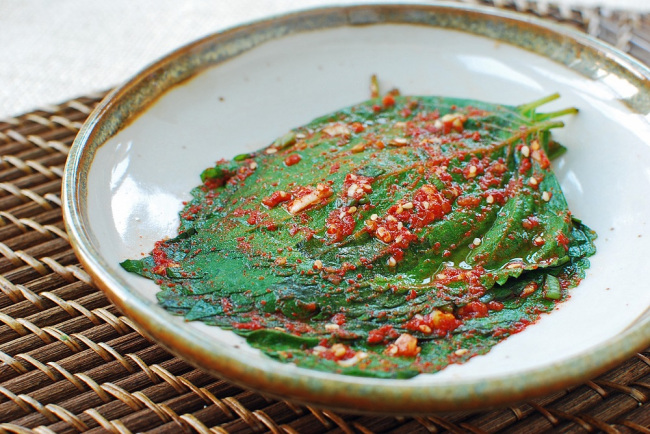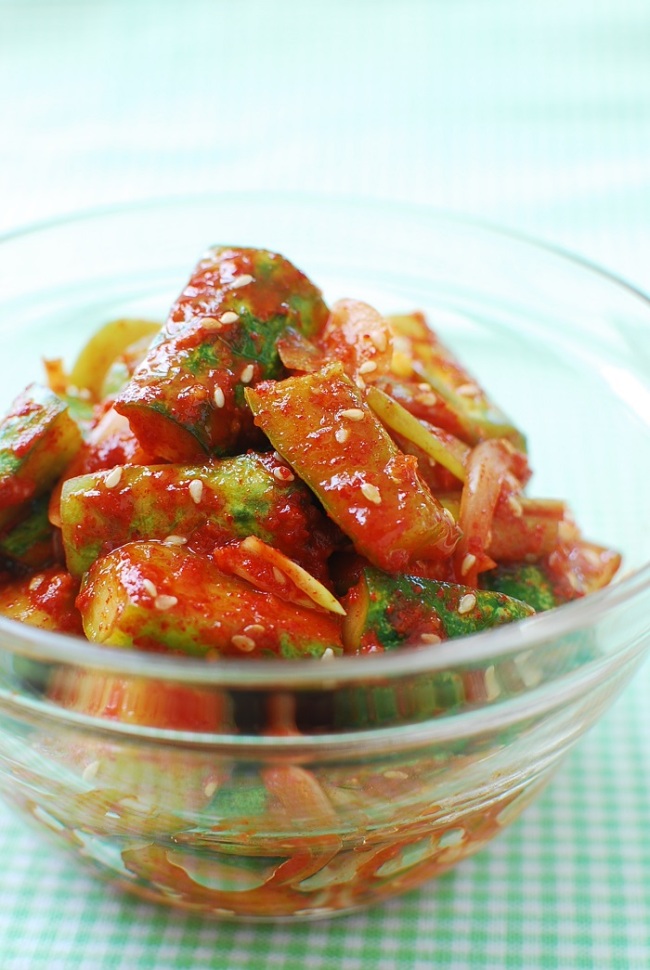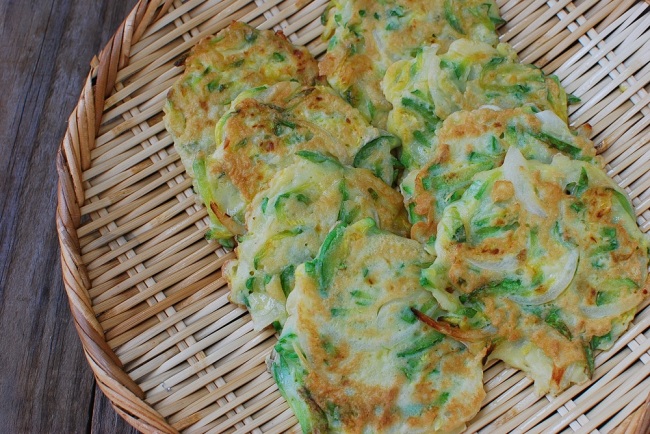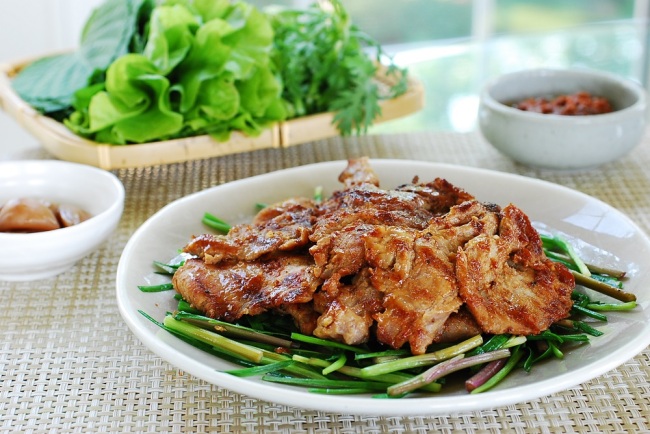 |
| Kkaennip kimchi (perilla kimchi) (Korean Bapsang) |
Ingredients:
● 50 to 60 kkaennip (perilla leaves)
● 2 to 3 tablespoons gochugaru, Korean red chili pepper flakes
● 1 tablespoon fish sauce
● 1 tablespoon soup soy sauce (or use more fish sauce)
● 2 teaspoons minced garlic
● 1 teaspoon sugar
● 1 teaspoon roasted sesame seeds
● 1/2 cup water or dashima (dried kelp/kombu) broth
● (Boil a 5-cm piece of dashima in 1 cup of water for about 5 minutes and then cool with the dashima in it.)
Wash the kkaennip thoroughly under running water one at a time. Hold the stems together, and shake off the excess water.
Place them in a colander to dry or pat dry with a paper towel.
Mix all the seasoning ingredients, including the water (or dashima broth), well in a small bowl. Place 3 or 4 leaves at a time in a container with an airtight lid, and spread a teaspoon of the sauce all over. Repeat the process with the remaining leaves. Rotate the location of the stem of each batch to level the stack.
Pour any remaining sauce over the leaves when all the leaves are used up. Cover tightly with the lid. Let it sit at room temperature for a few hours and refrigerate. You can start enjoying it right away, but it will keep well for weeks.







